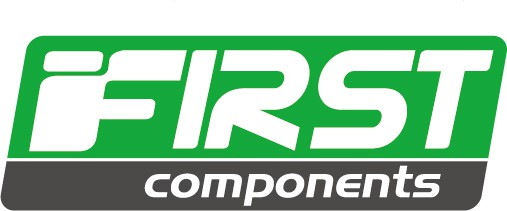A great e-bike is one that satisfies its market segment down to the smallest detail.
Of course, that’s an unattainable ideal. The question is, then, how close can you get to the ideal, al the while ensuring a healthy, sustainable margin?
Here’s a snapshot of some of the best e-bike kit as we transition into the second half of the year beginning the annual pilgrimage to Eurobike, which this year launches us into H2 with gusto.
Contents
A Survey of the Space
The e-bike space is crowded and becoming more so with every quarter. Increasing quality and value while rejecting a race to the bottom always wins in the end. And at a glance there is no shortage of quality around.
Cycling Plus, Mountain Biking UK, and BikeRadar recently held their 16th annual selection of the top bikes for 2024. This provides a good snapshot of the current state of the e-cosystem.
Their eMTB category is divided into full-power and lightweight.

Canyon & Whyte
The Canyon Strive:ON CFR got the top ranking in their full-power segment.
Here’s the emtbforums detailed and candid review by Knut Nes who has been on eMTBs for 10 years. He usually counterposes “racing” and “fun” but reports that he experienced both on this model. A wide ranging, candid appraisal.

The annual selection’s lightweight e-mtb of the year– is the Whyte ELyte (nice play on “light” and “elite”) 150 Works (“150” = fork travel), a member of the growing category of light eMTBs which handle similarly to conventional models while providing assist on the ascent. Yes, going “light” is certainly a theme (again).
Specialized
In the e-road bike category, Specialized’s Turbo Vado SL got the nod. Think of it as a particularly “sporty” city bike that targets commuters who, while opting for a city bike, want light, zippy, performance-oriented steed that can get/keep them fit in a fun way. Here’s a measured evaluation from a range of reviewers.
Stepping back, it reads as another reflection of the trend to lighter e-bikes which add value by catering to the broadening of horizons on the part of an increasingly selective (or even “sophisticated” almost fits here) user base. Gogoro had their eye on this segment when they introduced the ill-fated Eeyo a few years ago. The Eeyo was unquestionably better looking, yet the branding and the sheer utility of this model makes it unlikely to experience the same fate.

Orbea
Orbea scored a RedDot and iF Design award with their city bike, the Diem. Urbanbike describes the frame as “almost futuristic”—it appears so due to the combination of low seat stay and short seat tube which allows frame flex and hence absorbs impact without requiring any suspension components. That’s a good reason for sporting such a not-convincingly-attractive frame design, insofar as some sort of functional logic grounds it. The use of an angle limited headset for the “Spin Block” function that prevents the bars from swinging wildly when the bike is at rest is a function that more brands would do well to include.
NO-BOundaries
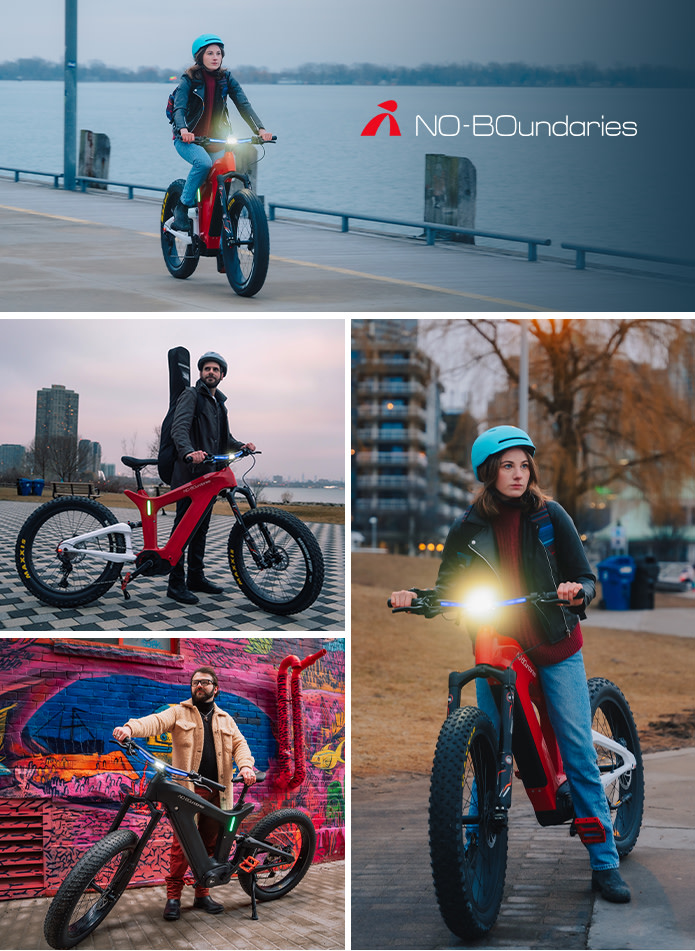
Finally, is the multi award-winning NO-BOundaries Voyager 1 likely to upend the e-bike market? The conventional spec which includes a carbon fiber frame, dropper post, 3.5 hour charge time and 100km range are impressive, yet you’d choose an Orbea Diem over this one in a nano-second—making it not look like a heavy-duty adventure bike (since it is primarily for urban commuting) might have been the way to go. The emphasis on the frame’s strength as a carbon frame and thus as extra “safe” is misplaced since only a hard knock on a frame technically warrants X-ray examination to ensure the structural integrity of the carbon.
The Central Control (smart) System is the technological innovation carrying the design’s ambitions which they categorize as “graceful control”. This integrates lighting, security, bike location, firmware updates via an app, as with many other similar offerings from other brands these days. The electronic fence limiting the region in which the bike can be operated seems to be an extension to security offered by more and more brands.
Portables
Uber-portable suitcase-sized e-bikes have begun to make an appearance in recent years, Honda’s Motocompacto coming immediately to mind. Concept designs as well as realized products are pushing the boundaries of practicality in personal micro-mobility even if they push the boundaries of credulity, such as Tatamel.
/cloudfront-us-east-1.images.arcpublishing.com/octane/MHTYL3ZCJNAAVOPAGVUQ7JGJE4.jpg)
The Tatamel debuted at last year’s CES and is now available for purchase but highlights the problem of definition—it is technically a motorcycle since it lacks cranks. A raft of restrictions that do not apply to e-bikes limit its utility and contradict its apparent convenience as an e-bike. The weight is another problem. Light it is not.
Good ideas without the depth of technical expertise will inevitably fail. The market will take care of bad ideas that are lucky to receive enough technical expertise to bring them to market. The gem of a good idea lives in the Tatamel . . . somewhere, and is perhaps waiting for keener minds to absorb the concept and come up with a viable solution further down the track.
Speed Pedelecs
The legacy Formula 1 brand, McLaren, probably knew that they needed an edge, a unique angle to have a chance in the market with their Extreme (600/250) and Sport (600/250) models. Otherwise they’re ‘just another e-bike’ in a broadly saturated market, a market with which they are not familiar and which has perplexed other like-minded brands.

Unsurprisingly they went with speed as the key—the addition of a “Race” mode to the Eco, Trail, and Sports mode turns an e-bike into the fastest on the market, in the case of the 600 versions anyway.
The Speed Pedelec niche is a tough one though. In a generally soft e-bike market it’s growing strongly across regions, and several popular brands have long staked out their claims—emphatically—in this territory.
Riese and Müller’s Delite5 is a new release with a frame that can fit various drives and batteries. China-based Joyland Tech are a top OEM supplier that are getting into this big time. So expect to see more brands going down this route. A Pinion MGU is the drive of choice.
Stromer have recently released their ST5 Pinion, which uses the Pinion Smart Shift transmission. The Pinion durable and low-maintenance 9-speed gearbox
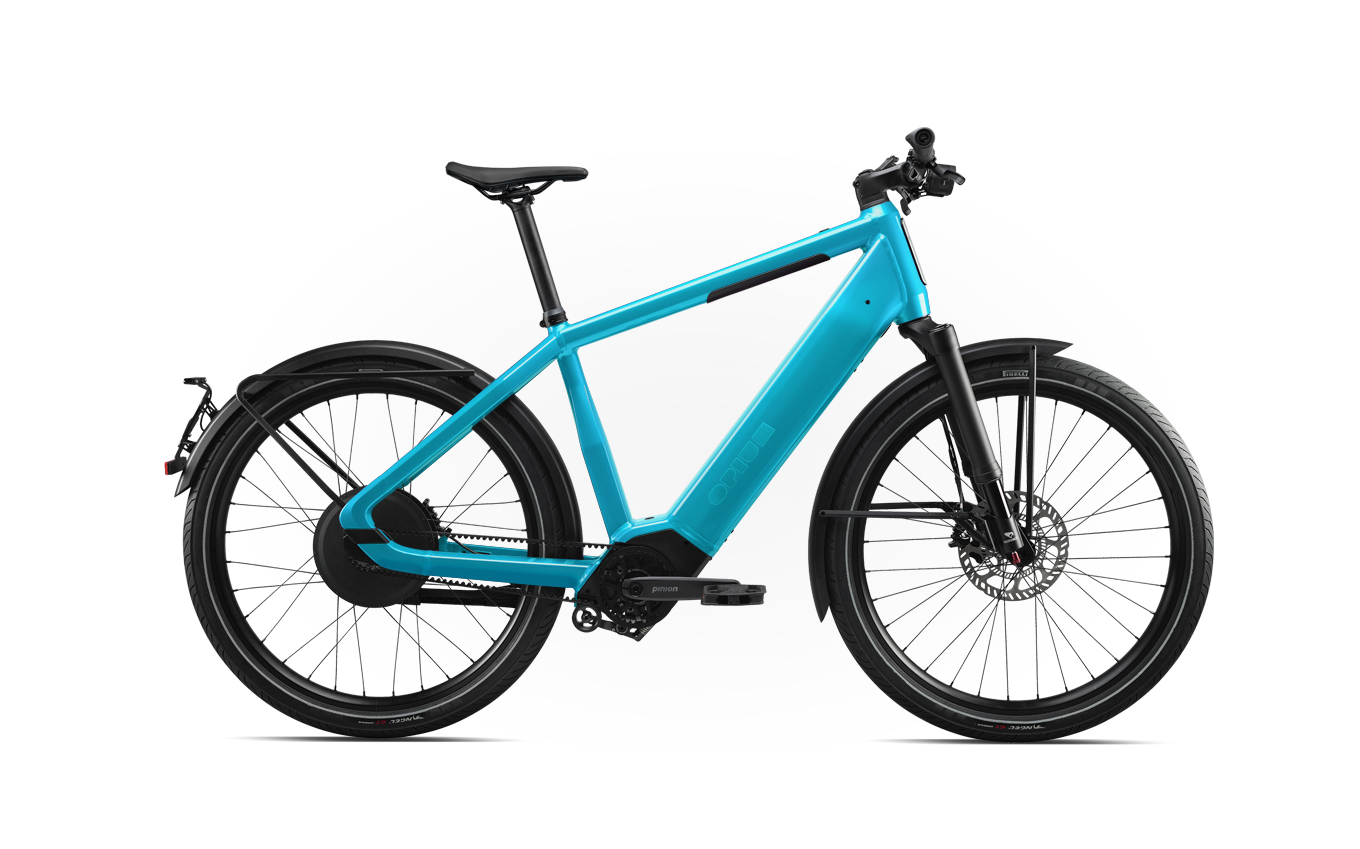
Opium has introduced their new S-Series LR (Long Range) with a range extender enabling cyclists to travel up to 300km, FIT 2.0 connectivity, and compact, integrated cockpit. Customers can personalize the color of their bikes as well.
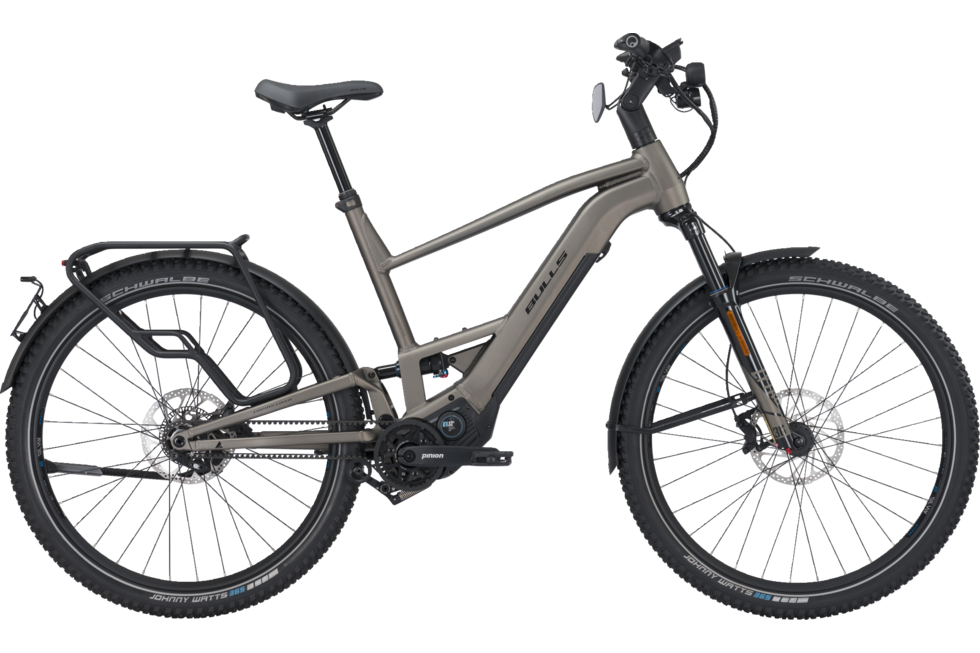
Bulls’ Vuca EVO Speed FSX 1
Flyer bring their carbon frame Upstreet TR:CF to market. Another brand making use of the ubiquitous Pinion MGU, as do Bulls’ 12 speed Vuca EVO Speed FSX 1.

Departing from this trend is the Ellio Max which uses a proprietary drive—two motors and a planetary gear system.

These units are aimed at commuter. LMX’s LMX 56 acknowledges the grey area between fast e-bike and electric motorbike and pitches its potential customers with the slogan “e-bike agility, motorcycle freedom”. The thrill of going fast and blowing your hair back is unabashedly the appeal of this model. They make no bones about it. The motor delivers up to 2,500 W and 175Nm of torque.
Other Interesting E-bike Tech
The heavyweight legacy motorcycle brand, Ducati, started with a road bike. Reading the trend they’ve now released their gravel bike or “All Road” as they wisely categorize it.

This relatively recent category recognizes a hidden niche consisting of riders loving their ability to set pace on the road plus being able to as not simply get off-road for a day but for a week or more on something other than an eMTB or fat bike. Ducati’s 12.4 kg carbon Futa All Road uses an FSA hub drive, SRAM Rival etap, 2×12 carbon rim . . . well, it’s an all-carbon job.
Converting legacy bikes into e-bikes is a growing niche with plenty of room for further growth. Although e-bikes are becoming more affordable over time, and are morphing into advanced devices in their own right, easily converting a non-“e” into an “e” suits a sizable minority of existing cyclists (remembering e-bikes generally are growing on the back of interest from non-cyclists).

Swytch are one of the leaders and have refined the latest iteration by following the lead of bike bag manufacturers. Stowing the hefty battery (which has been made a good deal less hefty in this version) under the top tube is just the thing.
Invanti’s Tornado is being presented as the first ever smart cargo e-bike.
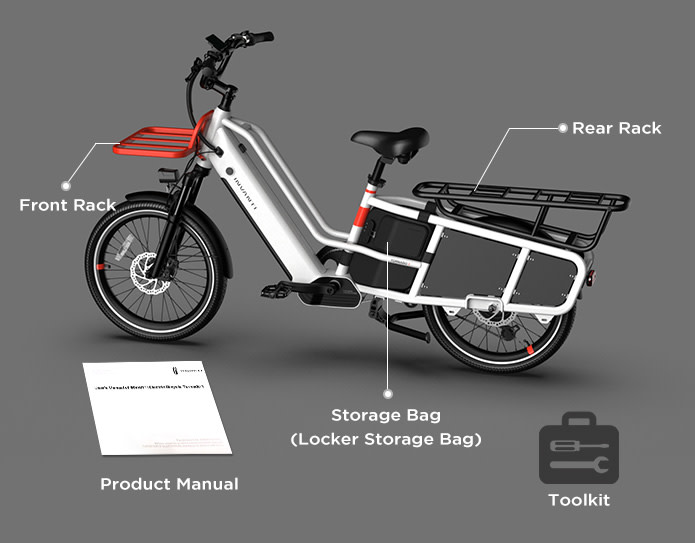
This unit sports most of what you’ll find on similar “smart” e-bikes not meant for cargo functionality.
The “smart” hub lock secures the hub for theft prevention with real time movement alert function should someone somehow move the bike which also sets off a loud local alarm. GPS location tracking assists in recovery with geofencing to limit the bike’s range of operation.
The bike is all app-controlled and includes customizable panniers front and back, reverse battery charging (yes to camping), and personalized adaption function. You’ll also find electric power assisted disc brakes, hydraulic spring suspension, integrated lighting and plenty of accessories. The RRP is around $1500 which makes this a great car substitute. It certainly sets the bar high for the niche.
Differentiation for prosperity not just survival
With niche saturation in any vertical, prosperity and perhaps even domination of a niche comes via brand differentiation. Meaningful differentiation, mind you, and not low impact changes that the market dismisses as gimmicks. It’s a necessary though maybe not a sufficient condition on the path to domination
So what technical elements and consumer-loving conveniences might be most likely to deliver such an outcome right now?
One is arguably UL (Underwater Laboratories) certification, the highest standard in e-bike safety. And certification achieved not through third parties, but directly.
Another is a proprietary powertrain system, which avoids having to compromise with off-the-shelf offerings. There’s no lack of choice and manufacturers consistently come up with satisfactory ODM products. Nevertheless by bringing design and manufacturing in-house, you are able to produce your own system to the exact specifications that aligns with what you KNOW your customers and potential customers are looking for.
The increased control when administering your own manufacturing regime also means much greater control over delivery. Timeliness is certainly underrated amongst manufacturers over and above completely unavoidable obstacles (container ships jackknifing in the Suez canal for example).
In-house frame design and welding that comes with multi year warranty overcomes a major objection in the mind of your target consumer (reducing perceived risk massively increases the chance of a sale). A built-in foldaway handle on your battery to facilitate manipulation—no need to awkwardly handle a large, chunky battery casing. Certified testing that significantly exceeds the ISO-4210 standard means far fewer customers complaining of broken bikes (having put the bike through absolute hell) at the end of the day.
Waterproofing is crucially important. One weakness in current motor design is the need for frequent replacement or repair due to water damage. Creating a bike where washing with a pressurized jet of water is not a problem would be a huge plus with the public to boot.
Multiple levels of pedal assist mirror the expansion of tradbike group sets from 3 speed right through to 12. More is certainly more when your customer wants to fine tune exactly how fast they pass the rabble on their way to the top of Mont Ventoux (some react very badly indeed so you need plenty of options). Built-in tracking for when (not if) the bike is stolen is surely a given these days.
That’s by no means the complete list of essential items. But it’s a start and if you could get a unit into the market—cost-effectively you’re on your way. The key question is does bringing expertise in-house for a wide range of processes that might normally be outsourced more cheaply increase costs prohibitively? Good management and creativity are essential requirements to making this work.

Velotric has integrated the elements and more into their Discover 2 looking to get that edge in a crowded space. A model for how to proceed? Certainly one to study closely.
